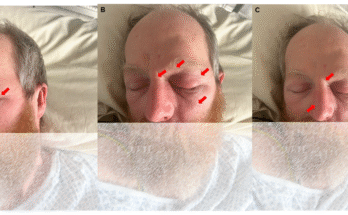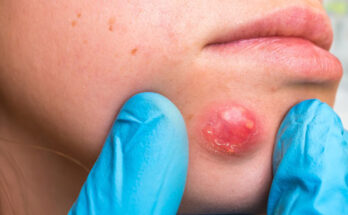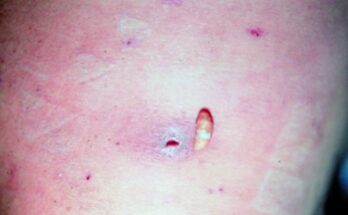Have you ever seen someone with big, raised, shiny bumps on their skin that look like scars? That’s most likely keloids, which is what seems to be happening in the picture you see here.
Let’s break it down in easy words.
✅ What Are Keloids?
Keloids are a type of extra scar tissue. When your skin gets hurt—like from a cut, piercing, burn, or even acne—it usually heals with a scar. But sometimes, the body goes into overdrive and makes too much scar tissue. That extra tissue keeps growing and forms a keloid.
🧬 Why Do Keloids Happen?
Doctors aren’t exactly sure why some people get keloids and others don’t, but here are some known facts:
-
Genetics: If someone in your family gets keloids, you might get them too.
-
Darker skin tones: People with brown or black skin are more likely to get keloids.
-
Injuries or piercings: Places like the chest, back, shoulders, and ears are more prone.
🔍 What Do They Look Like?
-
Raised, thick, and rubbery bumps
-
Can be red, dark brown, or shiny
-
Sometimes itchy or painful
-
May keep growing for weeks or months
In the image, it looks like the person has multiple dark, bead-like keloids behind the ear and along the neck—likely from piercings, cuts, or even repeated irritation (like shaving or skin infections).
🚫 Are Keloids Dangerous?
No, keloids are not cancerous and are usually not harmful to your health. But they can cause:
-
Itching or pain
-
Embarrassment or self-esteem issues
-
Tightness in the skin if they get large
🛠️ Can Keloids Be Treated?
Yes—but treating keloids can be tricky. Some options include:
-
Steroid injections to shrink them
-
Laser therapy to smooth the skin
-
Freezing (cryotherapy) for small ones
-
Surgery, but they can grow back even bigger afterward
-
Silicone sheets or creams to help flatten them
Doctors often combine two or more treatments for better results.
🧴 How to Avoid Getting Keloids
-
Avoid unnecessary piercings or tattoos if you’re prone to keloids
-
Treat acne or skin wounds gently and early
-
Talk to a dermatologist if you have a history of keloids before getting surgery or cosmetic procedures



